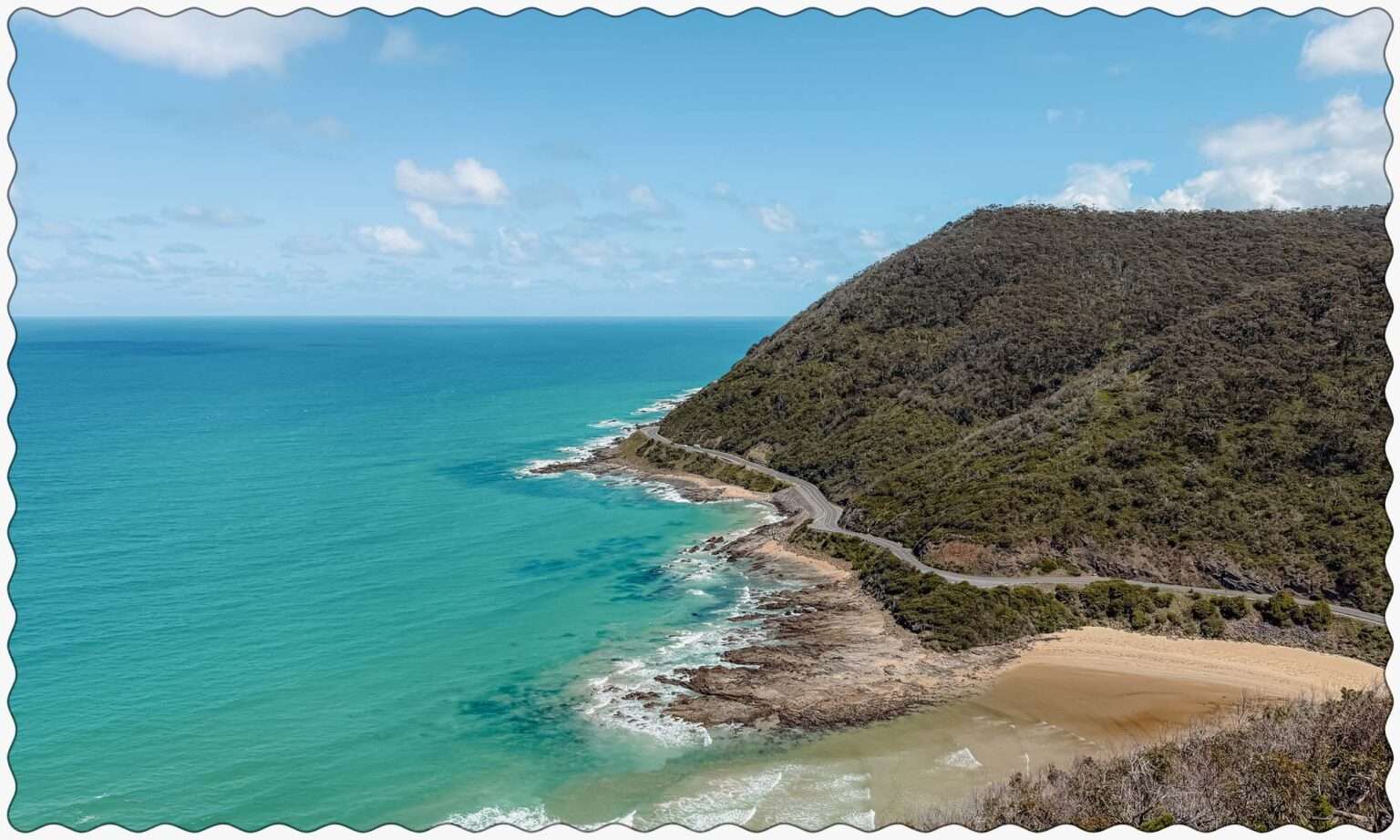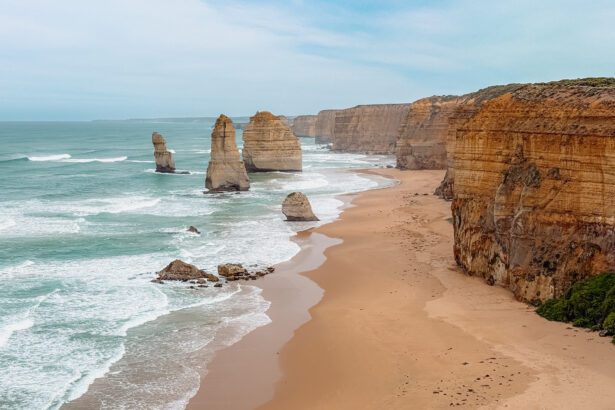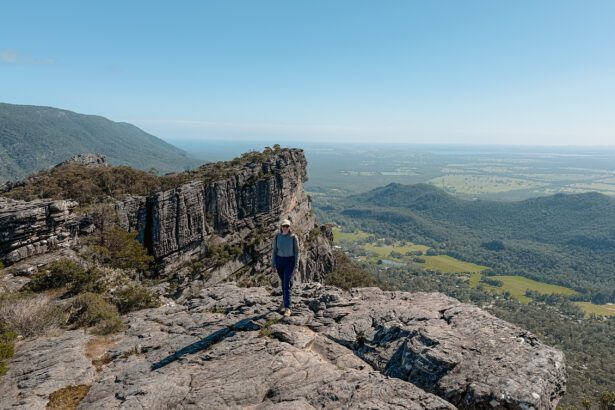Well, we finally did it! We drove on the left side of the road! And for great reason. We wanted to explore the iconic coastline of south-eastern Australia by driving the Great Ocean Road. This stretch of coastline is regarded as one of the finest ocean roads in the world. The cliffs and beaches along the coast, the small towns and seafood shacks, and the incredible rock formations did not disappoint.
In addition to taking in the landscapes, we had the opportunity to spot some unique Australian wildlife, including the kookaburra, Australia’s national bird. We even got to see our first wild koala while at one of the viewpoints! Unfortunately, koalas are getting much harder to spot along the Great Ocean Road. Tourists have heavily disturbed the animals by invading their personal space, touching them, attempting to feed them, etc. for their social media content, which is completely inappropriate, selfish, and disheartening. This has put a lot of stress on the environment and the animals themselves, driving them away from their natural habitats.
Beyond driving the Great Ocean Road, we knew that we had to find a way to get from Melbourne to Adelaide. We could have spent even more time taking in the views and the coastal towns along this route but we had decided to visit and hike in Grampians National Park (located just north of the Great Ocean Road) before continuing onto Adelaide. Here, we saw our first kangaroos (we really are hitting all the Australian wildlife icons on this trip), made some new friends, and hiked to our hearts’ content.
Destination Overview
Driving the Great Ocean Road and Visiting Grampians National Park
Victoria is a state in southeast Australia known for its vibrant capital city of Melbourne, mountainous national parks, and beautiful southern coast. Many Australians say the Twelve Apostles rock formations along the coastline is the most iconic landmark in the state and well worth driving the Great Ocean Road to visit.
The Great Ocean Road begins 100 kilometers (62 miles) from Melbourne in Torquay and is a total of 241 kilometers (150 miles) long, ending in Allansford. It follows the contours of the land allowing access to beaches and providing views high above cliffs overlooking the Great Southern Ocean.
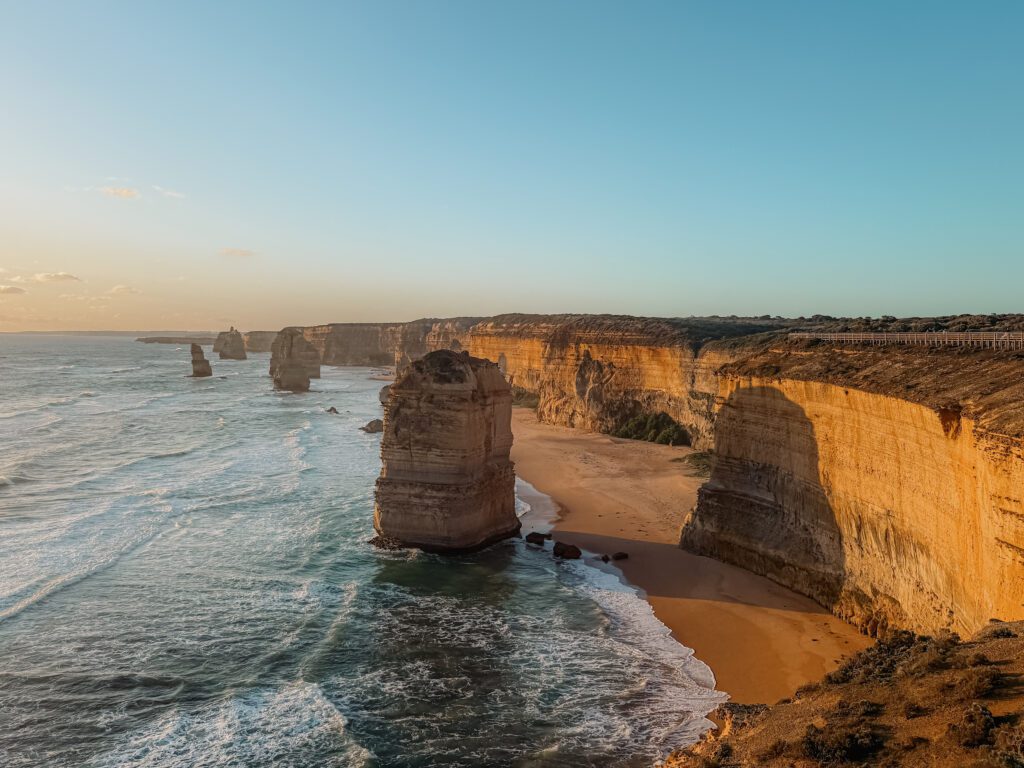
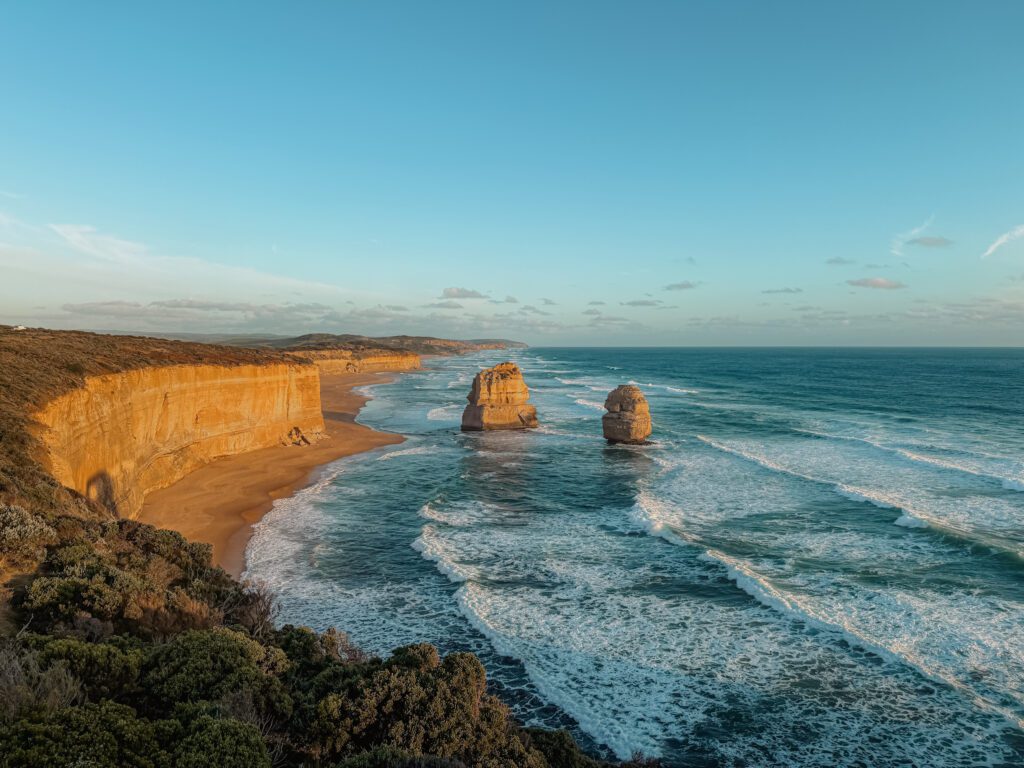
There are a few options that people can look into to enjoy the route; In order to make the most of the drive many people stay at least one night in the coastal towns along the way if they are driving themselves. (It is possible to do the whole drive and return to Melbourne in one day but it will be a long day on the road). And if you don’t want to drive, there is always the option to do a tour group to the different sites along the Great Ocean Road, limiting your independence and flexibility. At the end of the drive, there is an option to continue along the Southern Ocean Drive to Adelaide, return directly to Melbourne, or continue inland to Grampians National Park. We opted to continue inland to Grampians National Park before continuing to Adelaide.
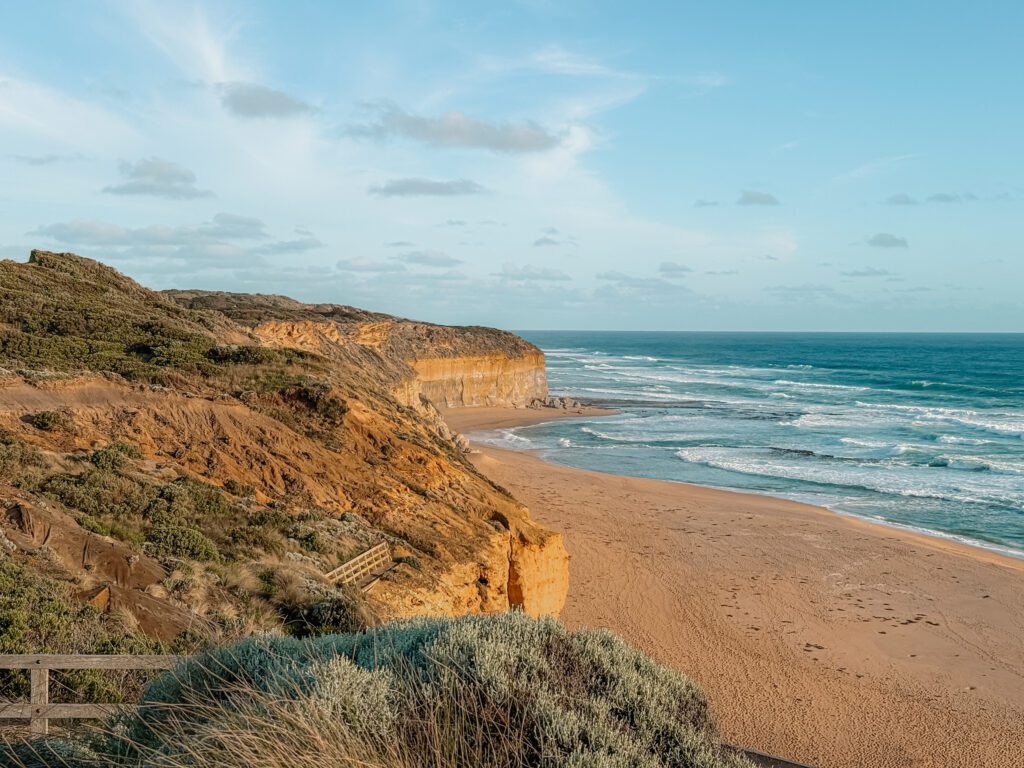
An Interesting Fact
Driving the Great Ocean Road is a Top Road Trip in Australia
Australia is slightly larger than the contiguous United States and contains unique natural wonders throughout the sparsely populated country. The best way to experience these beautiful areas is in your own vehicle so you can stop and get out as much as you want between towns or cities. We were a little worried to drive on the opposite side of the road but were encouraged to rent a car while in Melbourne because driving the Great Ocean Road is the best way to appreciate the route. We learned that the Great Ocean Road was constructed after WWI to create work for returned servicemen and the first sections were built in 1936. In 1972 it was renamed as the Great Ocean Road and today is regarded as one of the finest ocean road’s in the world. We decided to spend 1 night in Port Campbell and complete the 241 kilometer (150 mile) drive over 2 days.
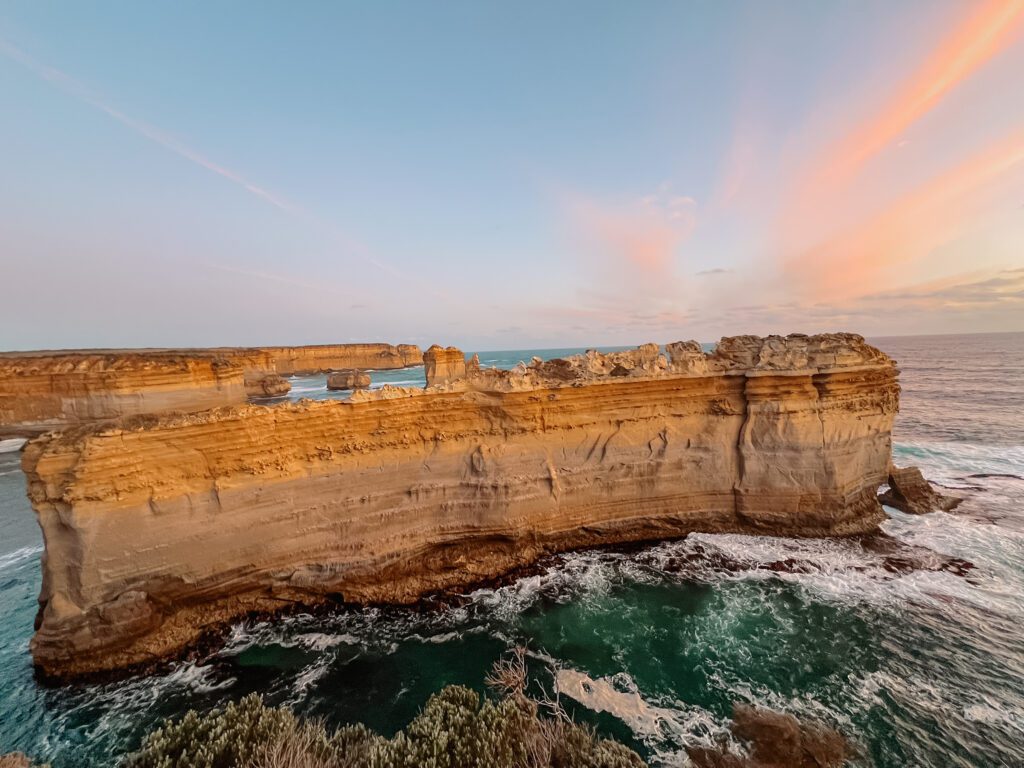
There are places to stop on the way from Melbourne to the start of the Great Ocean Road in Torquay such as the towns of Geelong or Queenscliff. One of the first stops along the scenic drive is the Great Ocean Road Memorial Arch which is a nice photo opportunity and contains some informational panels. Other popular places to stop include Lorne Beach, Koala Cafe, Cape Patton Lookout, Apollo Bay, and Great Cape Otway National Park.
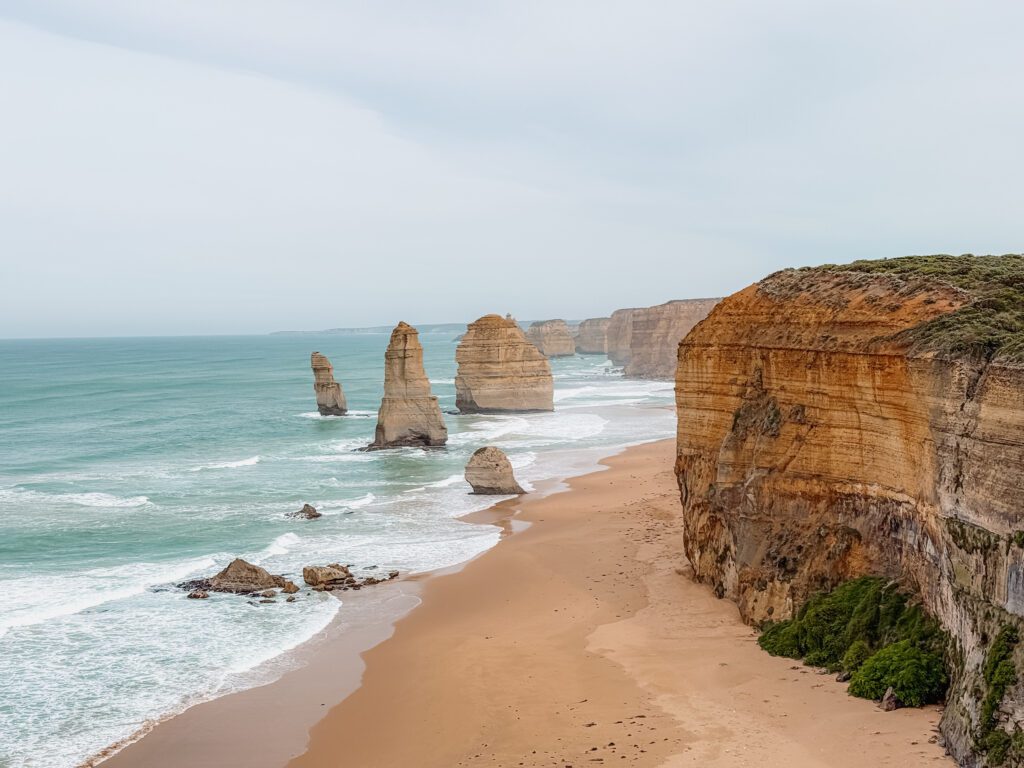
Our favorite overlook was at Teddy’s Lookout, which has beautiful vistas of the road and ocean below. We finished day 1 of the road trip around sunset for stunning views from Gibson’s Steps and The Twelve Apostles. These two stops alone solidified why the Great Ocean Road is such a popular drive. Staying in Port Campbell allowed us to return to the Twelve Apostles in the morning to see it in a different light and with fewer people. The remainder of the Great Ocean Drive to Allansford included scenic stops at other rock formations like Lord Ard Gorge, The Razorback, London Bridge, The Grotto, Bay of Martyrs, and Bay of Islands. By the end of the drive we wanted to continue exploring Australia by car to see more of the natural wonders. (And we were more confident in our ability to drive on the left side of the road!)
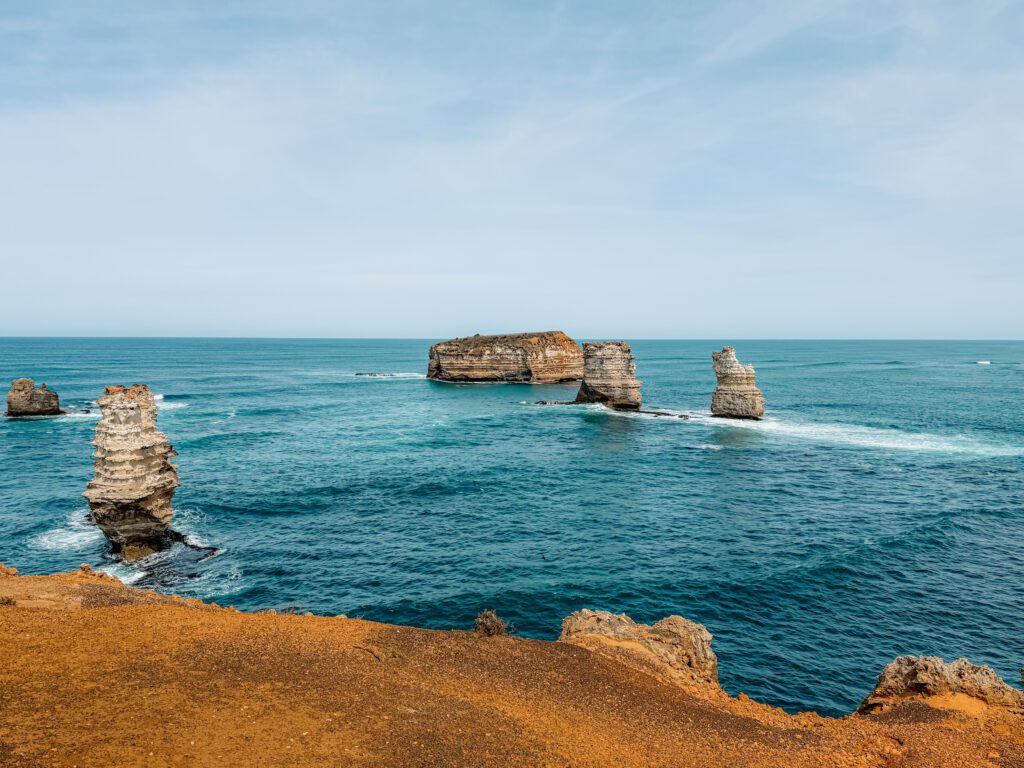
Where to Read More
Great Ocean Road Itinerary Options for 2, 3, and 4 Day Road Trips
This Great Ocean Road itinerary walks you through options for 2, 3, or 4 day road trips to best explore the top stops along this iconic drive.
Travel Tip of the Week
Add a Stop At Grampians National Park While in Victoria
Grampians National Park, also known as Gariwerd by the Aboriginal people, is located approximately 250 kilometers (155 miles) to the east of Melbourne. It is also only 170 kilometers (105 miles) to the north of Allansford so we decided to add this to the end of our road trip along the Great Ocean Road before continuing on to Adelaide. It is known for its striking sandstone mountains that jut up from the surrounding area as well as containing the richest Aboriginal rock art in south eastern Australia. The park is split into Southern, Central, and Northern Grampians sectors with the most visited portion being the central area around the town of Halls Gap. In order to visit the most popular parts of Central Grampians we spent a full day at the national park and stayed the evening before and after to maximize our day in the park, but a longer trip could be planned for more extensive exploring.
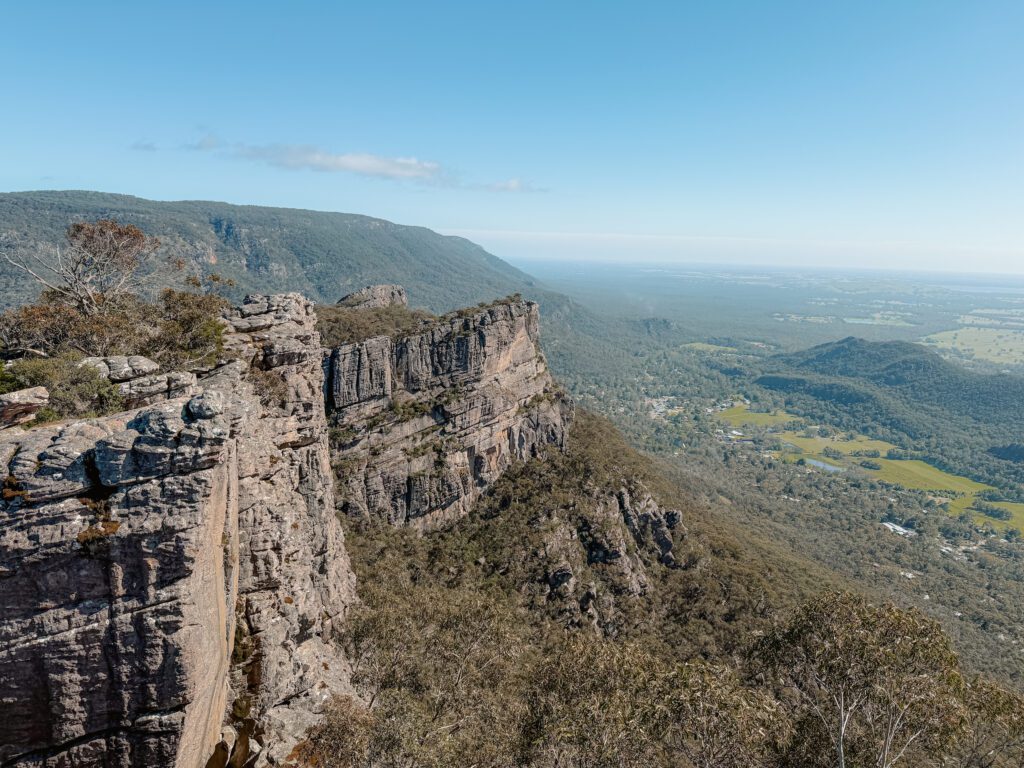
Our visit coincided with a local holiday, so it was filled with people from Melbourne getting away from the city for the weekend. We decided to start our day early to take advantage of the Pinnacle via Grand Canyon trail without crowds. It was a nice hike and the summit views were incredible looking out over jagged rocks to lower parts of the national park and the town of Halls Gap. On our return to the carpark (parking lot in American English), we encountered many people on the trail and it was challenging to navigate all of the cars trying to find places to park. It was definitely worth getting to the trail early to complete this hike before it got too busy.
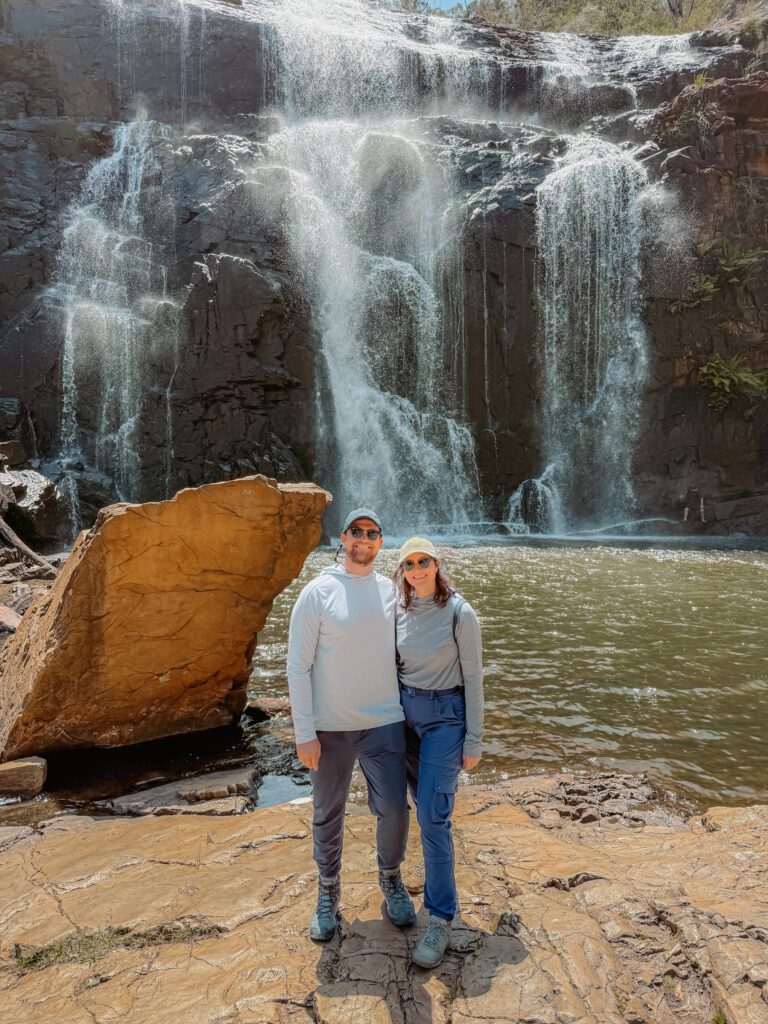
Other less popular, but still scenic, stops for the day included Mackenzie Falls, Reeds Lookout, and Boroka Lookout. Our second favorite place was The Balconies which required a short walk from the carpark and included sweeping views over extensive forests below. To conclude our time, we went to Brambuk Cultural Centre to try to learn more about the Aboriginal culture. but it was closed for renovations. We did receive a map of the most significant Aboriginal rock art in the area. We had time to stop at Bunjil’s shelter, which is a rare depiction of the creator. The art was protected by a cage due to people defacing this important site. Overall we were impressed by Grampians National Park and the large crowds showed why it was a worthwhile stop while visiting Victoria.
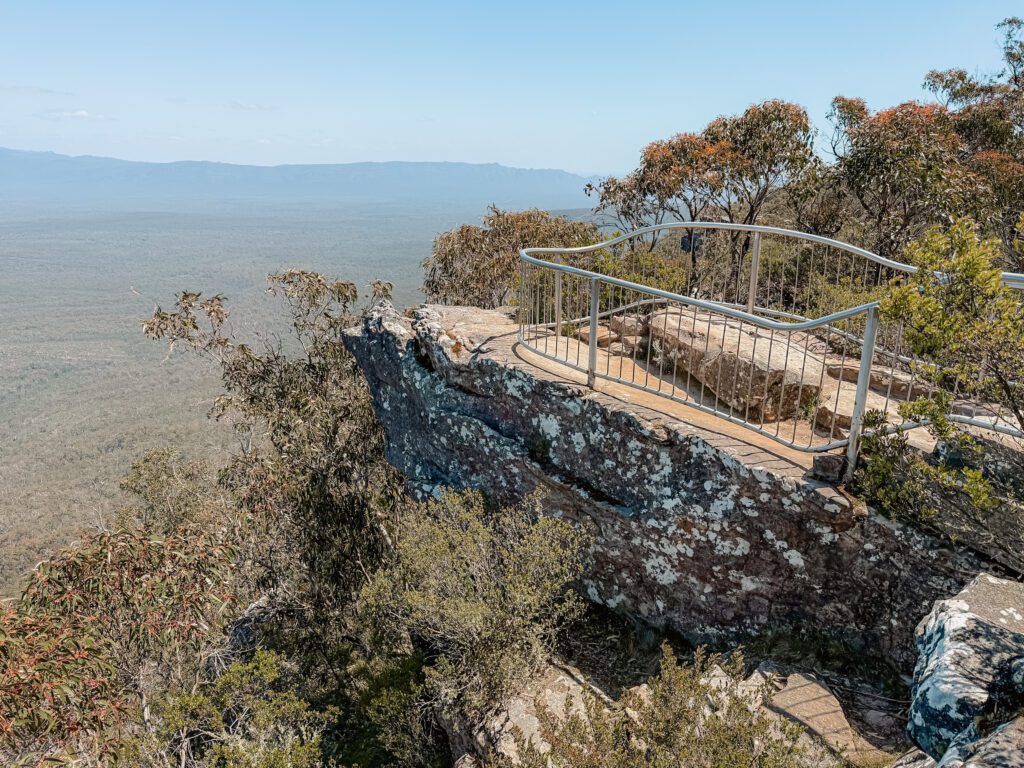
Where to Read More
Ultimate Weekend Itinerary to See the Attractions in Grampians National Park
The attractions in Grampians National Park, between Melbourne and Adelaide, with rock formations, aboriginal rock art, hiking , and wildlife.

